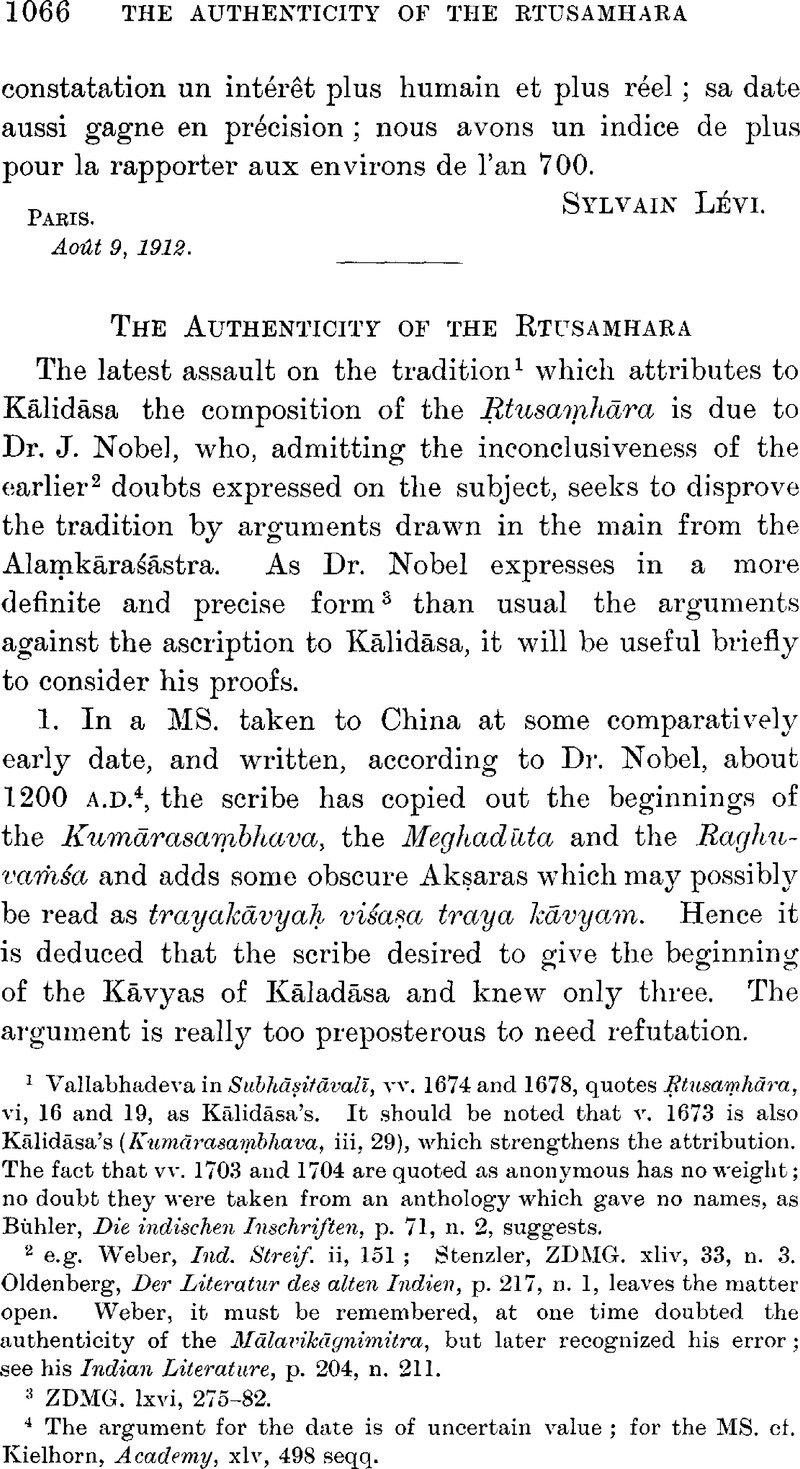No CrossRef data available.
Published online by Cambridge University Press: 15 March 2011

page 1066 note 1 Vallabhadeva, in Subhāṣitāvalī, vv. 1674Google Scholar and 1678, quotes Ṛtusaṃhāra, vi, 16 and 19, as Kālidāsa's. It should be noted that v. 1673 is also Kālidāsa's (Kumārasaṃbhava, iii, 29), which strengthens the attribution. The fact that vv. 1703 and 1704 are quoted as anonymous has no weight; no doubt they were taken from an anthology which gave no names, as Buhler, , Die indischen Inschriften, p. 71Google Scholar, n. 2, suggests.
page 1066 note 2 e.g. Weber, , Ind. Streif. ii, 151Google Scholar; Stenzler, , ZDMG. xliv, 33Google Scholar, n. 3. Oldenberg, , Der Literatur des alten Indien, p. 217Google Scholar, n. 1, leaves the matter open. Weber, it must. be remembered, at one time doubted the authenticity of the Mālavikāgnimitra, but later recognized his error; see his Indian Literature, p. 204, n. 211.
page 1066 note 3 ZDMG. lxvi, 275–82.
page 1066 note 4 The argument for the date is of uncertain value; for the MS. cf. Kielhorn, , Academy, xlv, 498 seqq.Google Scholar
page 1067 note 1 xiii, 24. For Mallinātha's date see Keith, , Boleian Catalogue, Appendix, p. 23Google Scholar.
page 1067 note 2 i, 36.
page 1067 note 3 xii, 19.
page 1067 note 4 Le théâtre indien, ii, 43Google Scholar.
page 1067 note 5 Les Littératures de I'Inde, p. 217.
page 1067 note 6 Sanskrit Literature, p. 317.
page 1067 note 7 Übereinstimmungen in Gedanken bei den indischen Kunstdichtern, pp. 6 seqq.
page 1068 note 1 i, 2, 3, 6, 25; iii, 2, 5, 20, etc.
page 1068 note 2 v, 5; vi, 69.
page 1068 note 3 iv, 42; xii, 9.
page 1068 note 4 Kultur der Gegenwart, i, vii, 201.
page 1069 note 1 Bühler, , Die indischen Inschriften, pp. 18, 70 seqq.Google Scholar
page 1069 note 2 Kielhorn, , Gott. Nach. 1890, p. 253Google Scholar.
page 1069 note 3 The difference between the Eclogues and Georgics of Vergil are much more marked, and yet their ascription to Vergil is in both cases beyond all doubt. Again, the poems of Catullus show a variety much greater than that found in the case of Kālidāsa's poems.